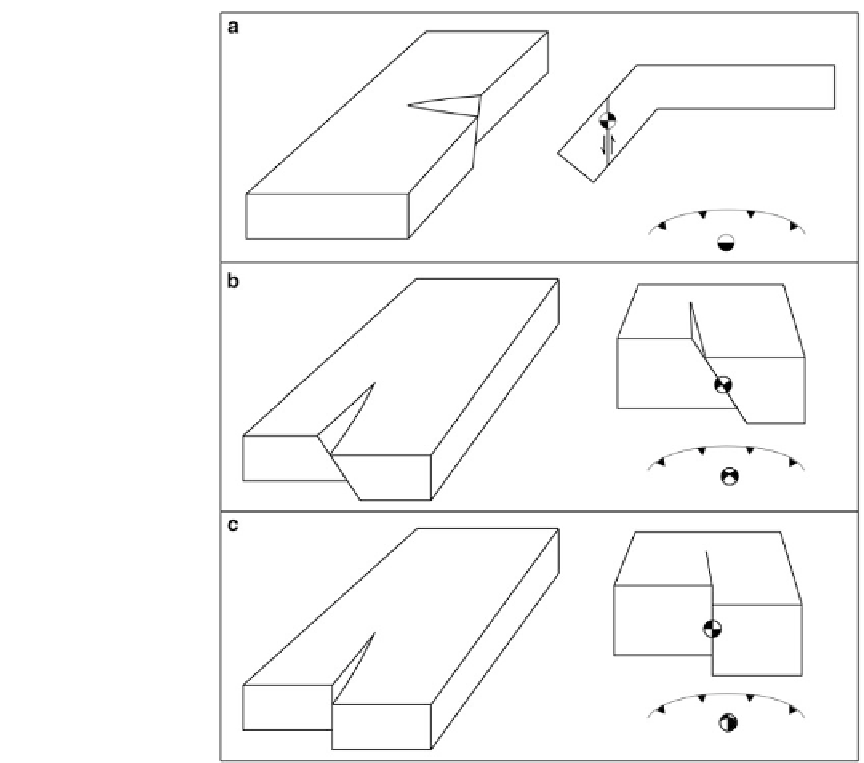Geology Reference
In-Depth Information
Fig. 11.11
Examples of
seismic deformation along
Wadati-Benioff zones. (
a
)
Downdip extension; (
b
)
Lateral extension; (
c
)
Vertical tearing
orders of magnitude smaller than the Bevis
(
1988
) estimate. More recently, Chen et al.
(
2004
), in a global study of the state of stress
associated with intermediate-depth earthquakes,
found significant lateral deformation everywhere
in the Mariana and South Sandwich slabs, and
in part of the Aleutian and Tonga subducting
lithosphere. Finally, in their study about the
relation between trench curvature and lateral
deformation of the slabs, Schettino and Tassi
applied Molnar's formula (
11.17
)totheevents
included in the Harvard CMT catalogue (1976
through 2009) of eight slabs. They found very
large strain rates associated with lateral extension
for the South Sandwich and Mariana slabs, and
moderate lateral extension in the case of the
Tonga and Japan slabs.
Conversely, Costarica, N. Kurile, Sumatra,
and Kermadec were found to be in a state of
small lateral shortening above 400 km. On
average, Schettino and Tassi (
2012
) calculated
downdip and lateral strain rates of the order of
10
14
s
1
, one order of magnitude larger than
Bevis' estimate. Three common kinds of intraslab
deformation at intermediate depth, and the
corresponding focal mechanisms, are illustrated
in Fig.
11.11
. Conversely, lateral deformation is
generally shortening at shallow depth and in the
transition zone, while downdip deformation is
almost always shortening below
300 km.
Problems
1. The figure below shows focal mechanisms
along the Wadati-Benioff zone of the Ionian
slab in central Mediterranean. Curved lines
represent isodepth lines of the slab. Classify


